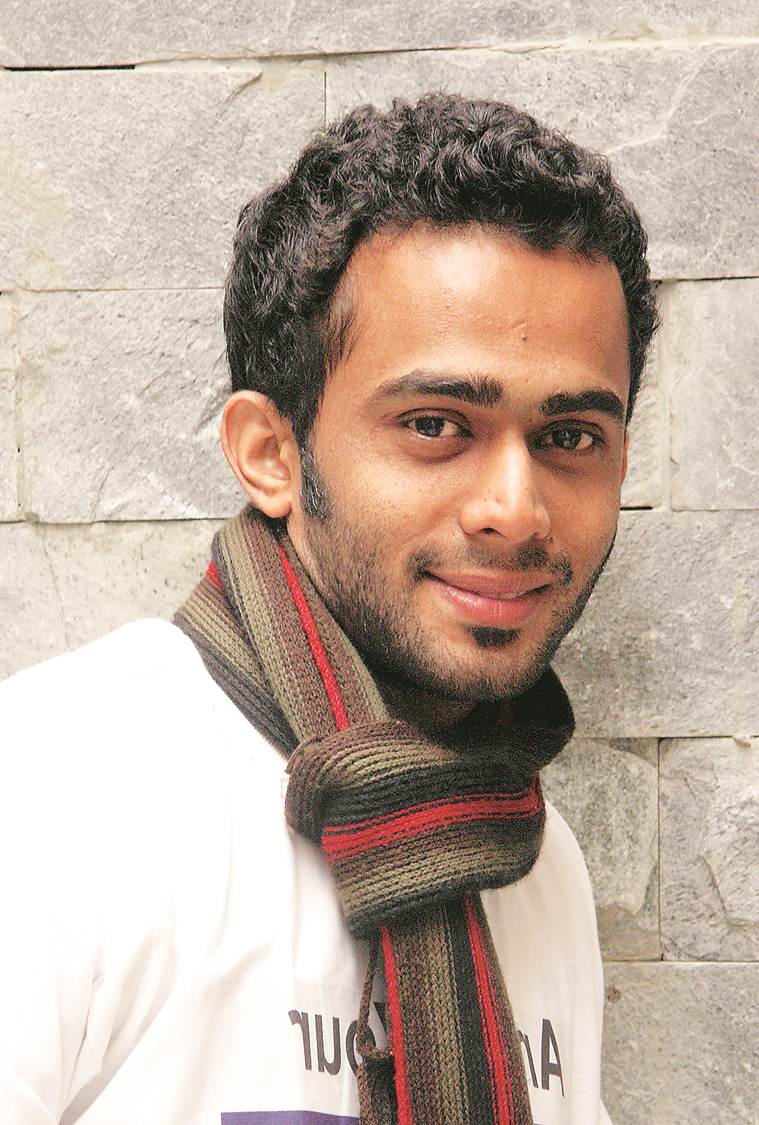 A work from the exhibition
A work from the exhibition
In Vinod Balak’s recent paintings, the world looks perfect, perhaps too perfect for comfort. The landscapes are a radiant green, the horizon fluorescent and the clouds serene. Yet, the nude figures who inhabit this land are out of place — women play soccer, saints play jazz and men wear wings. They seem wildly euphoric in a synthetic pastoral setting. And that’s Balak’s take on “Tomorrow’s Land”.
Balak, 37, is a Delhi-based figurative painter who has often brought together Western and Indian art conventions in his practice spanning over 15 years. “Tomorrow’s Land” is his second solo show, ongoing at Galerie Mirchandani + Steinruecke, and it raises questions about a future that at first appears utopian, but probably isn’t. “There is a hidden violence in the paintings,” says Balak. That is certainly the case with The Tower of Euphoria (2019). The painting obviously references The Tower of Babel works made by Pieter Bruegel the Elder in the 16th century. Balak’s tower possibly performs the same function as the Biblical analogy in Bruegel’s works. “It is a commercial tower in an agricultural terrain,” says Balak. It soars into the heavens as a symbol of humankind’s hubris, but there is a modern context to the whole setting. The tower is anointed by a hoarding and a wall is vandalised with graffiti. It could easily be one of those many modern skyscrapers that have taken over green pastures.
 Vinod Balak
Vinod Balak
If we look closely, we can see that instead of Bruegel’s colosseum arches (meant as a comment on the vanity of the fallen Roman Empire), Balak has lined his tower with endless rows of chicken coops. Poultry cages form the background for another work, Game of Eves (2018), which recalls Renaissance depictions of The Three Graces as well as gopikas from Indian miniature traditions. In Game of Eves, a charged group of women rush to kick or catch a ball. When seen against the caged chicken, we get a sense that their wild abandon may be a conditional freedom.
The chicken coops repeat in yet another painting — it is almost as if they are the building blocks of “Tomorrow’s Land”. Balak says, “It’s related to consumerism, how we want to make more profit. The animal is alive, but all we try to do is make profit. The idea came to me from a chicken shop, where we can see rows of small cages or the big trucks that carry chicken. It is a form of architecture.”
Balak provides a lot of detail in his paintings, and tucked away in them are religious and mythological figures. Particular paintings comment on religious invasion that is coincident with ecological invasion. The Virgin Mary appears high up in The Tower of Euphoria, Krishna appears on a wall in The Circumambulation and the legend of Parasurama is revisited in The Saint and the Invaders. Religious conquest forms the theme of Holy Invasion (2015), in which a pope and a cardinal cross a river, with a row of rifleman standing guard behind them. On the opposite bank, a pride of lions roam, but can the holy men tame them? With its verdant landscape, reminiscent of Kerala, Balak’s home state, and the river a chemical green, the painting is an overt comment on the violent arrival of Christianity in the tropics.
Born into Hinduism and now an atheist, Balak is a self-avowed leftist looking at the production of religion. “The bridge is a metaphor for migration. I am looking at how myth overpowers a culture and we are forced to believe that our racial identity comes from that,” says Balak, adding that this exhibition is less satirical than most of his earlier works. However, it almost feels that Balak’s land of tomorrow could well be the world we live in today.
The exhibition is on view till March 3 at Galerie Mirchandani + Steinruecke, Mumbai